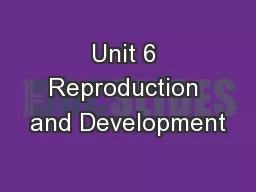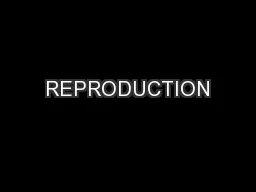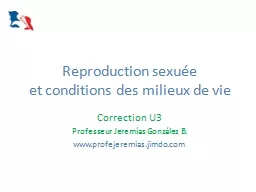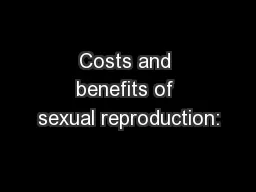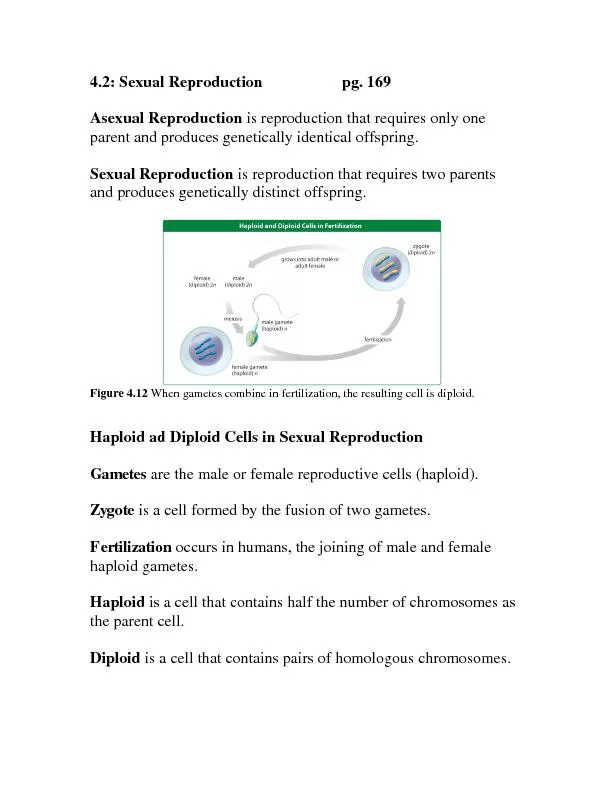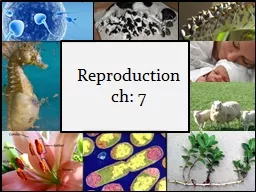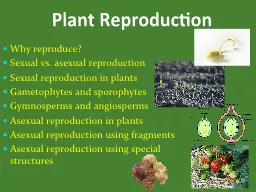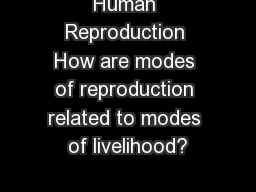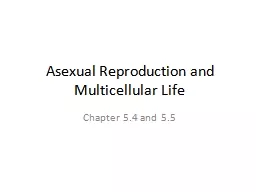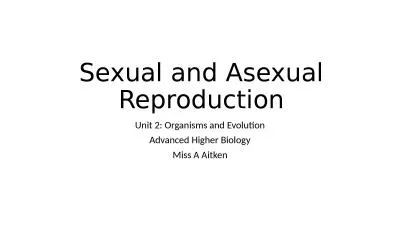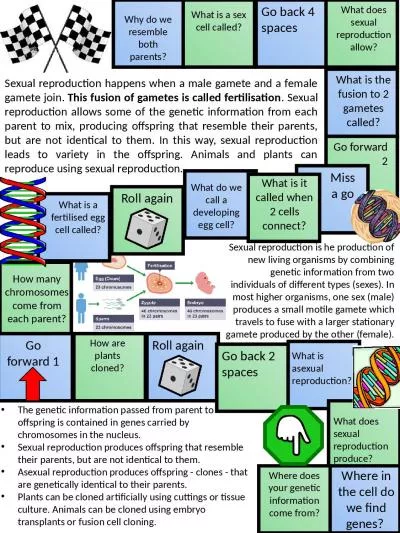PPT-Unit 6 Reproduction and Development
Author : phoebe-click | Published Date : 2017-10-08
Part 1 The Reproductive Systems ZOOL1072 Human Anatomy and Physiology FEMALE REPRODUCTIVE SYSTEM Introduction Purpose of sexual reproduction Fertilization Gynecology
Presentation Embed Code
Download Presentation
Download Presentation The PPT/PDF document "Unit 6 Reproduction and Development" is the property of its rightful owner. Permission is granted to download and print the materials on this website for personal, non-commercial use only, and to display it on your personal computer provided you do not modify the materials and that you retain all copyright notices contained in the materials. By downloading content from our website, you accept the terms of this agreement.
Unit 6 Reproduction and Development: Transcript
Part 1 The Reproductive Systems ZOOL1072 Human Anatomy and Physiology FEMALE REPRODUCTIVE SYSTEM Introduction Purpose of sexual reproduction Fertilization Gynecology Diagnosis and treatment of female reproductive diseases. Animal Science. What is Reproduction? . It occurs when organisms multiply, or produce offspring.. Sexual reproduction occurs when a female gamete and a male gamete unite.. Asexual reproduction doesn’t involve gametes. (ex. Simple cell division). and. GENETICS. TEKS. 7.14B – Compare the results of uniform or diverse offspring from . sexual or asexual reproduction.. 7.14C – Recognize that inherited traits of individuals are governed in the genetic material found in the genes within chromosomes in the nucleus.. et conditions des milieux de vie. Correction . U3. Professeur . Jeremías. González B.. www.profejeremias.jimdo.com. 1. .- Doc. 1 et . 2 . La . mégachile transporte le pollen de . fleur en fleur en butinant. Elle favorise ainsi la fécondation nécessaire à la transformation des fleurs en fruits. . The . disadvantages and advantages of sexual . reproduction. CfE. . Advanced Higher Biology. Unit . 2: . Organisms and Evolution. SQA mandatory key information. Disadvantages of sexual reproduction – males unable to produce offspring, only half of each parent’s genome passed onto offspring. Benefits outweigh disadvantages due to increase in genetic variation in the population. . pg. 169 Asexual Reproduction is reproduction that requires only one parent and produces genetically identical offspring. Sexual Reproduction is reproduction that requires two parents and produces ge 1. Make a Venn Diagram. 2. Asexual Reproduction. Sexual Reproduction. Both. Types of reproduction in living organisms. Pass DNA from parent to offspring. Asexual Reproduction. Requires only one parent. ch. : 7. Sexual or Asexual. Asexual – involves a single parent organism and produces off-spring or daughter cells that are clones. Sexual Reproduction – involves genetic contribution in the form of gametes from two sources. Sexual vs. asexual reproduction. Sexual reproduction in plants. Gametophytes and sporophytes. Gymnosperms and angiosperms. Asexual reproduction in plants. Asexual reproduction using fragments. Asexual reproduction using special structures. Modes of Reproduction . (1 of 2). 4. .1 Illustrate how modes of reproduction are related to modes of livelihood.. The . F. oraging Mode of Reproduction. The Agricultural Mode of Reproduction. The Industrial/Digital Mode of Reproduction. Test Tomorrow!!!!!!!. Which of the following is an advantage of sexual reproduction over asexual reproduction?. I. Sexual reproduction is more rapid and less complicated.. II. Sexual reproduction results in more diversity.. Life. Chapter 5.4 and 5.5. KEY CONCEPT. Many organisms reproduce by cell division.. Asexual reproduction. Creation of offspring from a SINGLE parent that does not involve the joining of gametes.. Binary fission is similar in function to mitosis.. Unit 2: Organisms and Evolution. Advanced Higher Biology. Miss A Aitken. Costs and Benefits. Two forms of reproduction:. Sexual Reproduction. Asexual Reproduction. Why do both forms exist?. They must exist because neither one is perfect for all situations. If it was perfect, only one would exist.. This fusion of gametes is called fertilisation. . Sexual reproduction allows some of the genetic information from each parent to mix, producing offspring that resemble their parents, but are not identical to them. In this way, sexual reproduction leads to variety in the offspring. Animals and plants can reproduce using sexual reproduction.. Leading TV Unit Manufacturer in Pune Innovative Designs, Superior Quality at Adeetya's Kitchen & Furniture https://adeetyas.com/tv-unit-manufacturers-in-pune.php
Download Document
Here is the link to download the presentation.
"Unit 6 Reproduction and Development"The content belongs to its owner. You may download and print it for personal use, without modification, and keep all copyright notices. By downloading, you agree to these terms.
Related Documents

